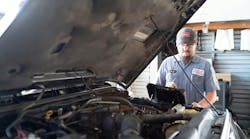The story has been told many times. A 2006 Law in Europe banning future cars from using R134a leads to the selection of R-1234yf by all car makers. A lack of supply of the chosen refrigerant gives the car makers a one year reprieve during 2012, and then the shocking Daimler announcement in late September of 2012 that they would not use R-1234yf for safety reasons. Creative videos, misleading claims, lawsuits, patent challenges, loopholes in the Type Approval process, a French ban on sales of Daimler cars, test after test after test, and now the European Court of Justice; it has been a roller coaster ride at best and on some days, a Hollywood horror movie.
So here we are nearly two years removed from the Daimler announcement and at the surface, the entire situation has calmed significantly. The European Commission is preparing their infringement case against Germany for allowing R-1234yf-type approved cars to be filled and sold with R-134a. The R-1234yf implementation by others continues to progress, albeit at a far slower pace than was first thought and both the supply and price of R-1234yf remain high. A few million cars on the road and no reports of spontaneous combustion due to R-1234yf, although there have been a boatload of R-134a car fires caused by those other flammable substances under the hood. I digress… As Chrysler, GM, Honda, BMW and others introduce their R1234yf cars, Daimler stands hard and fast in the CO2 camp. Please don’t get me wrong, CO2 is a fine refrigerant for the Alps, where it never gets over 81 degrees F (27 degrees C) on a bus, with excess horsepower and lots of space to put in the system. But CO2 is a real challenge for the global passenger car market where operation in the 100 percent humidity of Miami or the 120 degrees F (49 degrees C) temperatures of Arizona is needed on a daily basis. You see, cooling capacity is a problem for CO2 that will take years to overcome if it can even be done without breaking the bank.
At the moment, there are no published standards for CO2 systems to be used in passenger cars although some are in process. From experience, I can tell you that these types of standards are tedious, require the participation of numerous groups and seemingly take forever to get done. Even then, our industry often ends up with multiple standards based on geographical location, often with subtle but costly differences. That’s a whole new story that we’ll explore next time.


